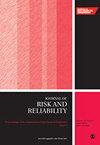基于贝叶斯代理的野火安全疏散规划和管理模型及软件
IF 1.8
4区 工程技术
Q3 ENGINEERING, INDUSTRIAL
Proceedings of the Institution of Mechanical Engineers Part O-Journal of Risk and Reliability
Pub Date : 2024-07-26
DOI:10.1177/1748006x241259215
引用次数: 0
摘要
有效疏散受野火威胁的社区是一项紧迫的挑战。可靠的疏散规划和执行需要全面了解各种相互依存的物理、社会和行为因素,以及先进且易于使用的决策支持系统。本文提出了野火安全疏散(WiSE)框架,该框架整合了火灾动态、人类行为和交通模型,可预测任何特定社区在野火疏散过程中安全疏散的几率。WISE 框架提出了统一的依赖关系图和工作流程,提供了子模型之间一致的粒度,并创建了可比较的疏散场景。我们提出了一个人类行为模型,用于预测基于社会人口脆弱性特征的社区决策和行动。基于代理的随机方法生成疏散出发时间。通过拥堵情况下的交通模拟来计算出行时间。最后,使用贝叶斯网络将子模型结合起来,并根据综合模型通过概率推理预测社区安全(成功疏散的概率)。此外,还介绍了 WiSE 框架的概念验证软件实施。为了展示该模型和平台的能力,模拟了 2018 年加州营火期间整个天堂市的疏散情况。模拟结果得到了参与此次灾难的消防员的定性验证。对参数进行了敏感性分析,以比较几种疏散方案,并为未来的野火疏散规划提供启示。本文章由计算机程序翻译,如有差异,请以英文原文为准。
A Bayesian agent-based model and software for wildfire safe evacuation planning and management
Efficient evacuation of wildfire-threatened communities is a pressing challenge. A reliable evacuation planning and execution requires a comprehensive understanding of the diverse and interdependent physical, social, and behavioral components, and advanced, yet easy to use decision support system. This paper proposes the Wildfire Safe Egress (WiSE) framework, which integrates the fire dynamics, human behavior, and traffic model to predict the chance of safe egress by any given community during a wildfire evacuation. WISE framework presents a unified dependency diagram and workflow offering consistent granularity between sub-models and creates comparable evacuation scenarios. A human behavior model is proposed to predict the community decision making and action based on their socio-demographic vulnerability profile. An agent-based stochastic approach generates evacuation departure times. The travel times are calculated through a congestion-informed traffic simulation. Finally, a Bayesian Network is used to combine the sub-models and to predict community safety (probability of successful evacuation) via probabilistic inference based on the integrated model. A proof-of-concept software implementation of the WiSE framework is also presented. To demonstrate the model and platform capabilities the evacuation of the entire city of Paradise during the California Camp Fire 2018 is simulated. The simulation results are qualitatively validated by the firefighters who served in this disaster. A sensitivity analysis of the parameters is performed to compare several evacuation scenarios and provide insights for future wildfire evacuation plannings.
求助全文
通过发布文献求助,成功后即可免费获取论文全文。
去求助
来源期刊

Proceedings of the Institution of Mechanical Engineers Part O-Journal of Risk and Reliability
ENGINEERING, MULTIDISCIPLINARY-ENGINEERING, INDUSTRIAL
CiteScore
4.50
自引率
19.00%
发文量
81
审稿时长
6-12 weeks
期刊介绍:
The Journal of Risk and Reliability is for researchers and practitioners who are involved in the field of risk analysis and reliability engineering. The remit of the Journal covers concepts, theories, principles, approaches, methods and models for the proper understanding, assessment, characterisation and management of the risk and reliability of engineering systems. The journal welcomes papers which are based on mathematical and probabilistic analysis, simulation and/or optimisation, as well as works highlighting conceptual and managerial issues. Papers that provide perspectives on current practices and methods, and how to improve these, are also welcome
 求助内容:
求助内容: 应助结果提醒方式:
应助结果提醒方式:


